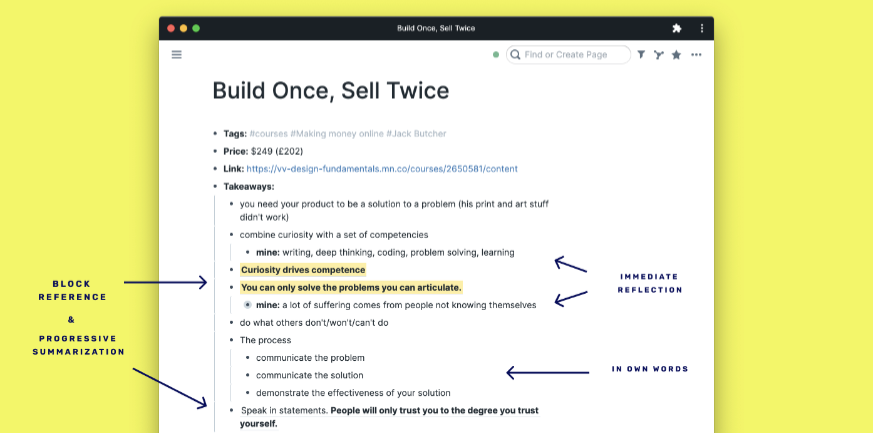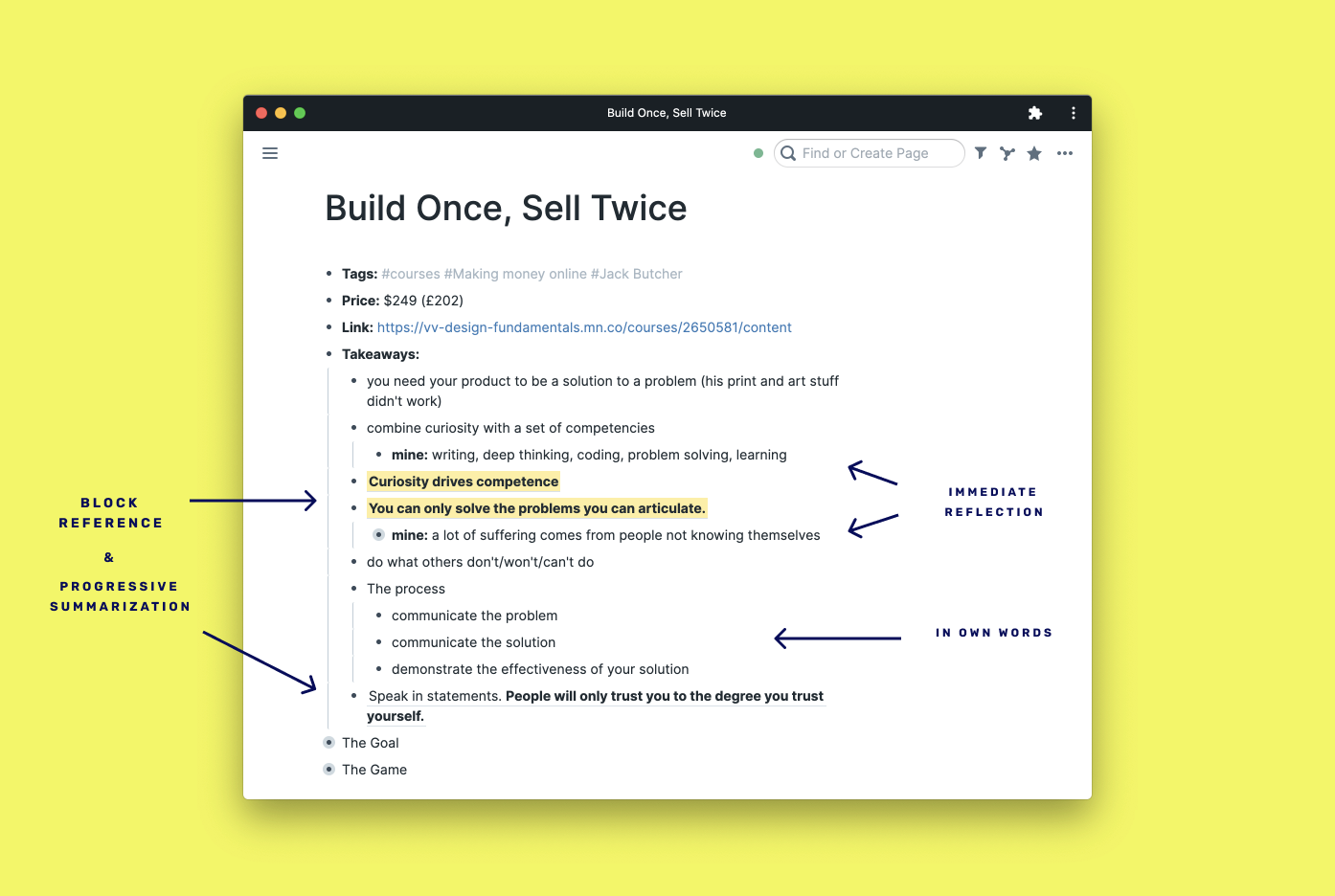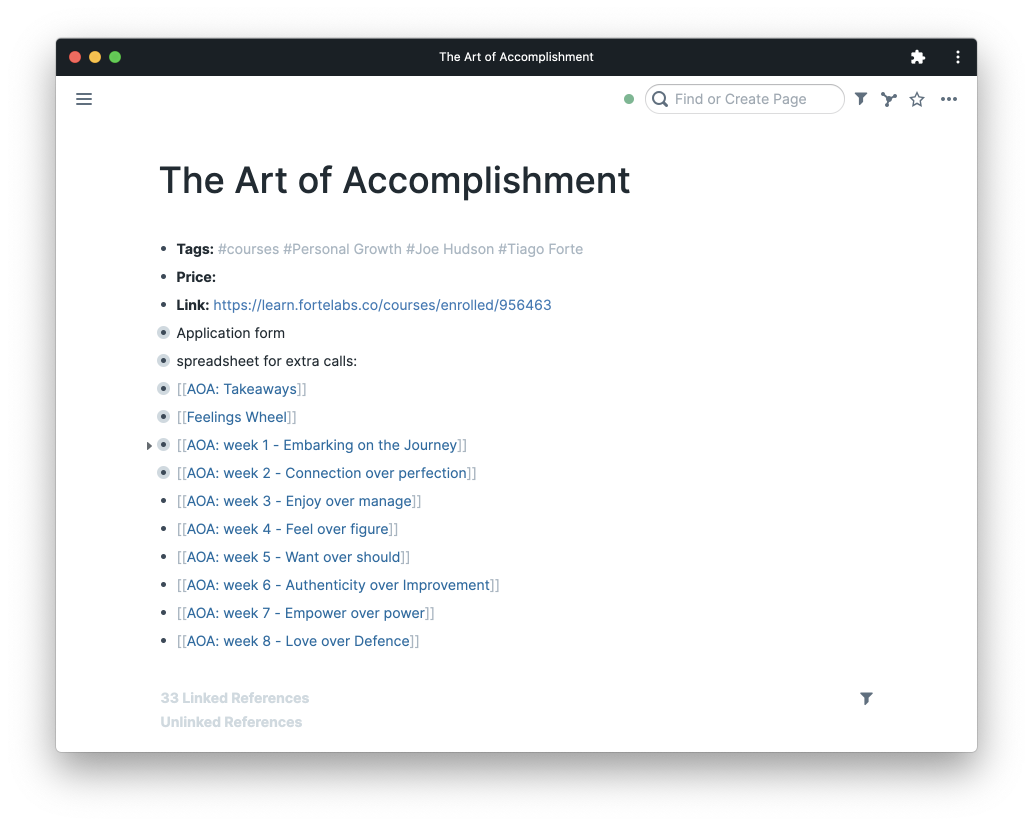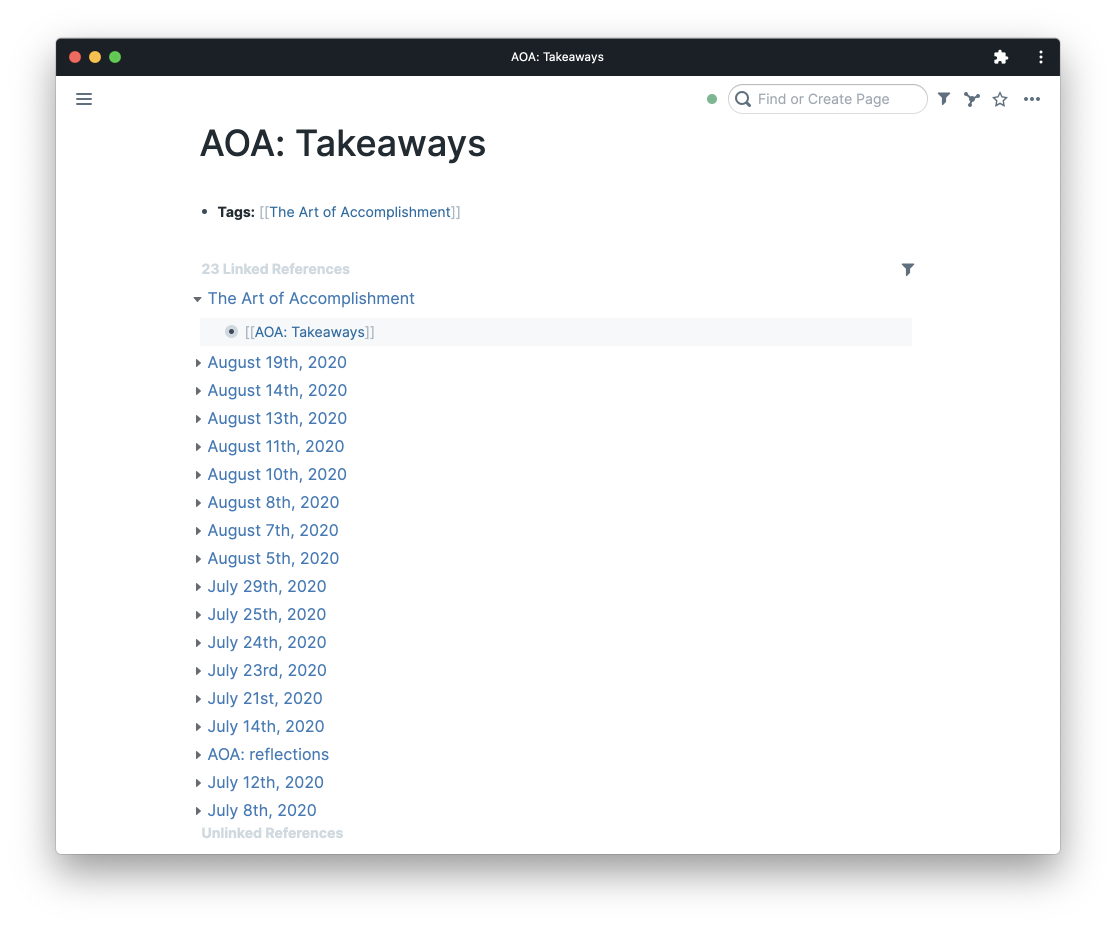(This article was first published on Anita Amini’s website.)
Summary
- Create a “Takeaways” attribute
- Write your learnings into your *own words* under it
- Use block references to copy parts that stand out
- Progressively summarize the block references
- As you apply the lessons, track them for future reference
Introduction
Since I started using Roam, I’ve taken around 5 online courses, through which I’ve landed on a simple yet effective system that fulfils 3 important goals:
- Better understanding and recall
- Easy to summarise and create content out of. Eg: blog posts or twitter threads
- Low friction – it shouldn’t take the joy out of taking the course.
The note is generally made up of 3 parts:
- Metadata (Tags, Price, Link)
- Takeaways
- Modules.
The Process
The metadata is self-explanatory. As for the modules, I add the headings as I go and copy any section that stands out underneath. The core lies in the Takeaways section. Here’s how to do it:
- As you go through, write the parts that stand out in your own words. This is key.
- For any excerpts under the module headings that are key, grab a block reference and put it under the takeaways section.
- As you do the above, you could progressively summarise upon reflection.
- Whenever you can, apply the lessons right there and then. For this, I use an attribute called mine (for lack of a better word) which is how I respond to a “prompt”. These allow me to reflect on the material right away and apply the lessons to my life. I usually track these under the Takeaways section. Or if it’s afterwards, I might do it on my daily page under the course’s page.
- Alternatively, I might create a task or link to a project if it’s not something I can apply right away.
Here’s an example of a course I started recently:
Applying the lessons right away.
Ongoing Courses
For longer term or ongoing courses, the syntax is slightly different. For instance, I recently took a course called The Art of Accomplishment (I’ve written about the experience here) which was a live cohort that spanned across 8 weeks. There were numerous group exercises as well as solo exercises to complete per week. In this case, each section became a page in itself.
And, as you can see below, making the Takeaways section a page made it easier to add to it on my Daily Note as I went through the course.
However, for small self-paced courses like the ones mentioned earlier, having Takeaways as an attribute works well. Of course, attributes (created by entering :: after the name) become pages in Roam — which is great because, at a quick glance, you could see the takeaways from the short self-paced courses you’ve taken.
Content Creation
I’ve started creating content from the courses I take. For example, this post on Daniel Vassallo’s Twitter course probably took a couple of hours to write. All I had to do was take my Takeaways section and expand around it. A few months after publishing this post, Daniel started offering an affiliate link.
That affiliate link helped me make my first $ online which was pretty cool (by the way here’s the link if you’re interested 😉 ). If it weren’t for writing the material in my own words as I went through it, I wouldn’t have been able to summarise the course so easily.
A Note on Recall
Personally, I don’t use any memorisation techniques for remembering the contents of online courses. For me the best way to “remember” the lessons is to apply them. In other words, create experiences out of them. The other method is to create content off the back of it.
My goal is to have the simplest system (rather than an elaborate one) that allows me to internalise the lessons, create something out of the material and have fun doing it. Over time, I’m sure the process will evolve to fulfil these goals better.






